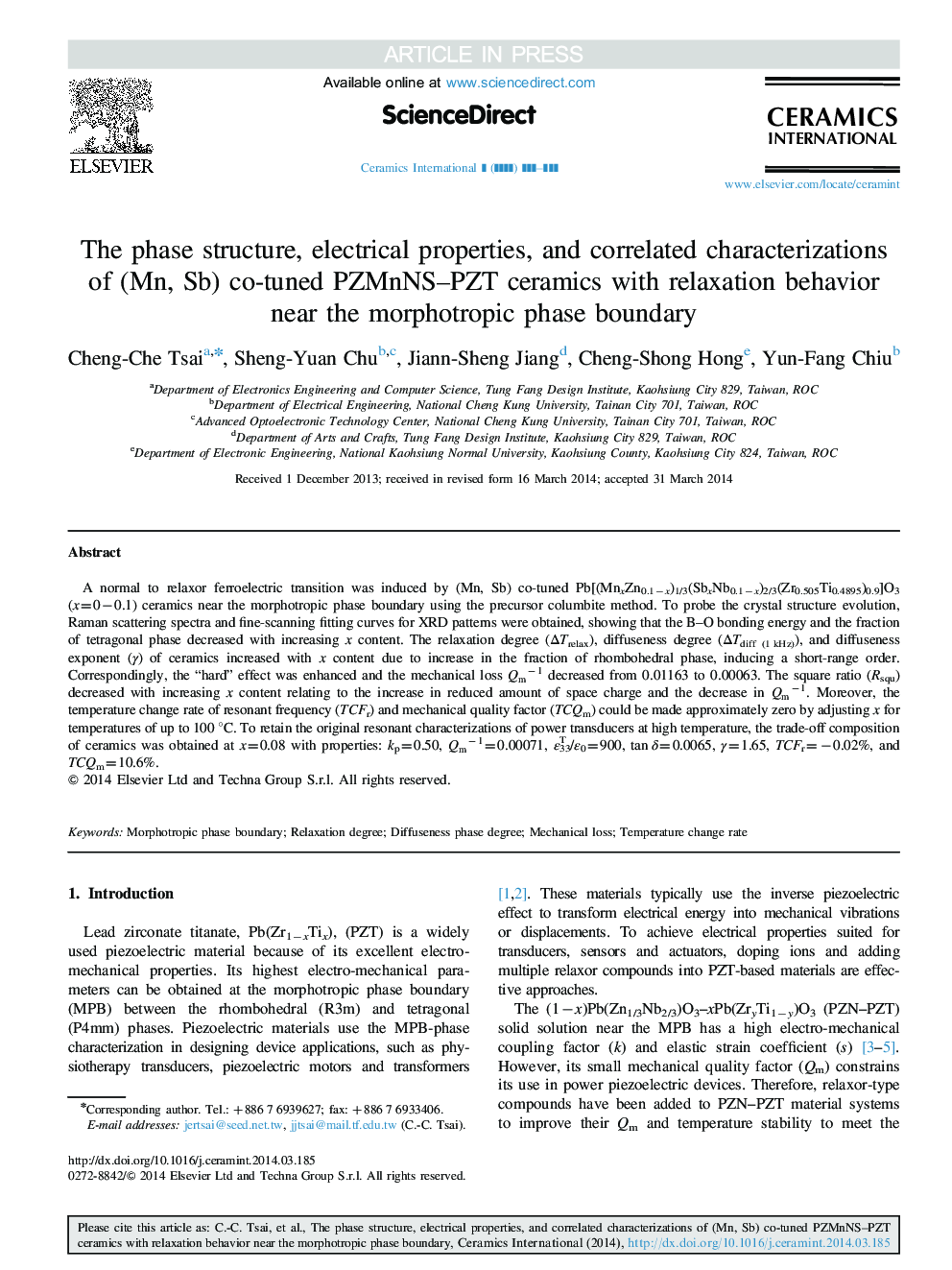| Article ID | Journal | Published Year | Pages | File Type |
|---|---|---|---|---|
| 10625416 | Ceramics International | 2014 | 13 Pages |
Abstract
A normal to relaxor ferroelectric transition was induced by (Mn, Sb) co-tuned Pb[(MnxZn0.1âx)1/3(SbxNb0.1âx)2/3(Zr0.505Ti0.4895)0.9]O3 (x=0â0.1) ceramics near the morphotropic phase boundary using the precursor columbite method. To probe the crystal structure evolution, Raman scattering spectra and fine-scanning fitting curves for XRD patterns were obtained, showing that the B-O bonding energy and the fraction of tetragonal phase decreased with increasing x content. The relaxation degree (ÎTrelax), diffuseness degree (ÎTdiff (1 kHz)), and diffuseness exponent (γ) of ceramics increased with x content due to increase in the fraction of rhombohedral phase, inducing a short-range order. Correspondingly, the “hard” effect was enhanced and the mechanical loss Qmâ1 decreased from 0.01163 to 0.00063. The square ratio (Rsqu) decreased with increasing x content relating to the increase in reduced amount of space charge and the decrease in Qmâ1. Moreover, the temperature change rate of resonant frequency (TCFr) and mechanical quality factor (TCQm) could be made approximately zero by adjusting x for temperatures of up to 100 °C. To retain the original resonant characterizations of power transducers at high temperature, the trade-off composition of ceramics was obtained at x=0.08 with properties: kp=0.50, Qmâ1=0.00071, ε33T/ε0=900, tan δ=0.0065, γ=1.65, TCFr=â0.02%, and TCQm=10.6%.
Related Topics
Physical Sciences and Engineering
Materials Science
Ceramics and Composites
Authors
Cheng-Che Tsai, Sheng-Yuan Chu, Jiann-Sheng Jiang, Cheng-Shong Hong, Yun-Fang Chiu,
